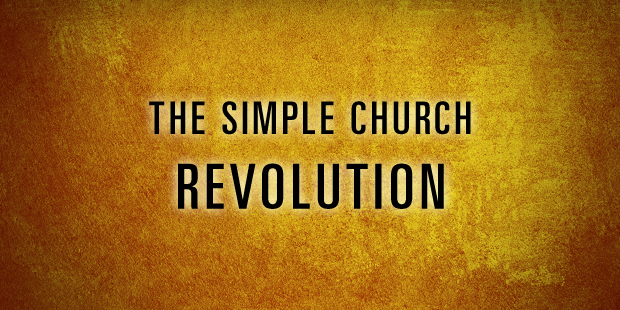Simple is in.
Complexity is out. Out of style at least.
Ironically people are hungry for simple because the world has become much more complex. The amount of information accessible to us is continually increasing. The ability to interact with the entire world is now possible. Technology is consistently advancing at a rapid pace.
The result is a complicated world with complex and busy lives. And, in the midst of complexity, people want to find simplicity. They long for it, seek it, pay for it, even dream of it. Simple is in. Simple works. People respond to simple.
The simple revolution is well underway.
Marketing and advertising executives are using simple slogans and advertising pieces. You know that because you have seen it. That is not all though. The revolution goes deeper than that. They are marketing their products as solutions for our complicated lives. The message is: “This product will simplify your life.” They know people respond to simple.
In a notable marketing book, Simplicity Marketing, Steven Cristol and Peter Sealey teach executives to position their products to promise customers a more simple life. They argue that an effective brand will reduce the stress of the customer. The value that many products offer is clutter reduction.
Take for example the marketing of the South Beach Diet. The diet market is cluttered. New diets and weight-loss strategies come along all the time, but South Beach promised the potential dieter something other plans failed to deliver: simplicity and less stress.
The founder and author of the South Beach Diet movement explained the essence of his diet this way: “What started as a part-time foray into the world of nutrition has led me to devise a simple, medically-sound diet that works, without stress, for a large percentage of those who try it.” Did you see it? Simple and stress-free. Besides a way for favorite desserts to actually be sugar-free, what more could dieters ask for?
OK. By now you get the point. Simple is in. Simple works. People respond to simple.
Growing and vibrant churches know this.
In our extensive research of more than four hundred evangelical churches for the book Simple Church, we discovered the simple church revolution. We compared growing and vibrant churches to nongrowing and struggling churches. Church leaders from both groups completed the same survey, which was designed to measure how simple their church discipleship process was.
We anticipated that the vibrant churches would score higher. We anticipated that there would be a relationship between a simple process and church vitality, but the results were greater than we imagined. Our statistical consultant told us that we found something big.
There will be more discussion of the study in the weeks to come here on the site, but here is the elevator conversation: The vibrant churches were much more simple than the comparison churches. The difference was so big that the probability of the results occurring with one church by chance is less than one in a thousand. Statistical people call this a relationship at the .001 level.
When a researcher finds a relationship at the .05 level, he calls his friends and brags. He knows he has found something worthwhile. When a researcher finds something at the .01 level, he calls his publicist and prepares to write. Finding something at the .001 level does not happen often. It’s a big deal. If you’re a stats person, it is “highly significant.”
The significance is that, in general, simple churches are growing and vibrant. Churches with a simple process for reaching and maturing people are expanding the kingdom. Church leaders who have designed a simple biblical process to make disciples are effectively advancing the movement of the gospel. Simple churches are making a big impact.
Conversely, complex churches are struggling and anemic. Churches without a process or with a complicated process for making disciples are floundering. As a whole, cluttered and complex churches are not alive. Our research shows that these churches are not growing. Unfortunately, the overprogrammed and busy church is the norm. The simple church is the exception, yet our research shows that should not be the case.
The simple church revolution has begun.
But most churches are too busy to notice.
Read more from Eric here.

Tags: Eric Geiger, Strategy, Structure
|
What is MyVisionRoom? > | Back to Leadership >




























